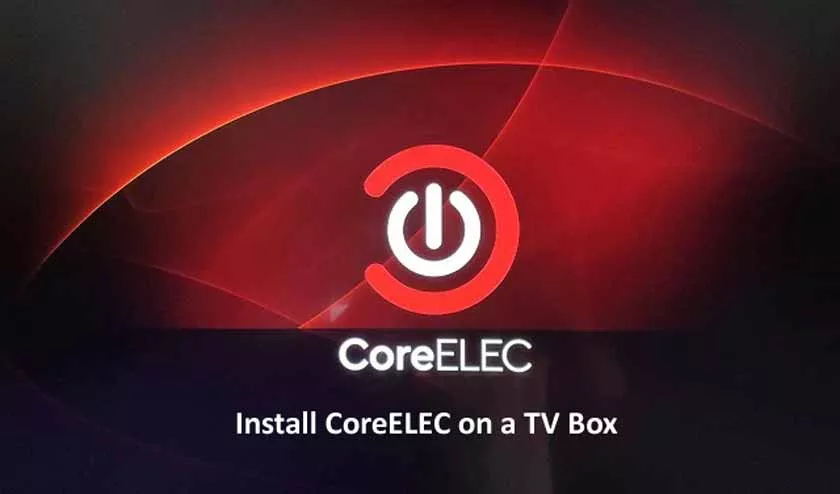Do you have a fairly old Android TV Box that you no longer use much of? Is the Android version so old that you can hardly install any apps anymore?
In this case, you may want to take a look atCoreELEC, a Linux distribution that is installed on an SD card and will substantially improve your device by giving it a new life.

What is CoreELEC exactly?
CoreELEC is an operating system based on the KODI player whose objective is toturn any TV box with an Amlogic chip into a multimedia center.
The user interface is the same as that of KODI and it is much easier to use if all we want is to watch videos, photos, listen to music or watch live TV through IPTV lists.
The good thing about CoreELEC is that being installed on an external drive (in this case, a microSD card) the original Android system of the TV Box is not touched at any time.
Thus, we can extract the microSD and the device will reload Android without any consequences for the user: both the configuration and the applications that we had installed will continue to be there.
How to install CoreELEC: step by step explanation
In order to use CoreELEC in our TV Box, we will only have to meet these 4 requirements:
- That our TV Box uses an Amlogic SoC.
- That the bootloader is not blocked.
- Have a microSD card to install the operating system.
- We will also need a PC to be able to record the image on the card.
Step 1: Download the CoreELEC installation package
With that said, let’s get down to business. The first step will be to download the correct version of CoreELEC that fits our TV Box model. For this we will go tothe download page of the official repositoryand download the most recent stable version.
Here we will find a drop-down menu where we have to select our brand and model of TV Box, as well as the amount of RAM that the device equips. Once this is done, a “Download Image” button will appear that will allow us to download the installation image package.
IF our TV Box model does not appear in the list, we will download the generic version of CoreELEC available onthe project’s GitHub page.
Step 2: Burn the image to an SD memory or a pendrive
It is recommended to use a microSD or pendrive of at least 4GB. Likewise, it is essential that it is not very slow, otherwise performance will be affected.
To save the CoreELEC image in the img.cz format that we just downloaded, we will use the Rufus program. It is a free PC application that allows you to create bootable external drives with ease. It can be downloadedfrom its official websiteand has a standard and portable version.
- Insert the microSD card or the pendrive into the PC.
- Rufus starts up.
- In “Device” choose the microSD you just connected. Click on “Select” and locate the CoreELEC image that you just downloaded.
- When you have everything ready, click on “Start”. Keep in mind that the contents of the card will be erased, so you will lose any file that you have stored inside.
Step 3: Copy the correct DTB.IMG file
The next step is the one that usually gives more problems, although if we do it well we do not have to have any setbacks.
For CoreELEC to load correctlywe must create a file called “dtb.img”in the root of the SD memory. This file must be compatible with the Amlogic chip used by our TV Box. Where can we get this file?
Luckily, this file is already inside the SD, in the “device_trees” folder. The problem is that there are many DTB files, which one corresponds to our TV Box model?
For this we will visitTHISofficialLISTwhere the file that we must use according to our TV Box model is shown.
Once we have the file located we will copy it and paste it in the root of the SD memory. Finally, we will rename the file to “dtb.img” (without quotes).
Step 4: Restart the TV Box from the SD memory
Now that we have the microSD memory or our USB pendrive ready, we can only connect it to the TV Box. However, for it to load CoreELEC we will have tomodify the boot configurationof the TV Box.
- Before inserting the SD, start the TV Box normally, enter the Play Store and install the “Reboot to LibreELEC” application. If you don’t have access to the store, you can download the app in APK formatfrom APK Pure.
- Insert the microSD or the USB pendrive in your TV Box.
- Open theReboot to LibreELECapp and select OK to reboot the device from CoreELEC.
Step 5: First boot of CoreELEC
The first time CoreELEC is started, it will take some time to configure the partitions and create the file system correctly. This process can take a couple of minutes.
If the system does not load correctly, it is because we have not used the correct image or – most likely – the dtb.img file that we have copied is not the one that corresponds to our TV Box model. Check the “device_trees” folder and try another file.
Once the system is loaded, we will see the CoreELEC logo and enter the interface, practically identical to that of KODI.
From here we can connect to the Internet, configure add-ons and ultimately, set up our own multimedia center and configure it to our liking. The possibilities in this regard are really wide.
If at some point we want to go backward, we will only have to turn off the TV Box, remove the microSD and Android will reload normally.
